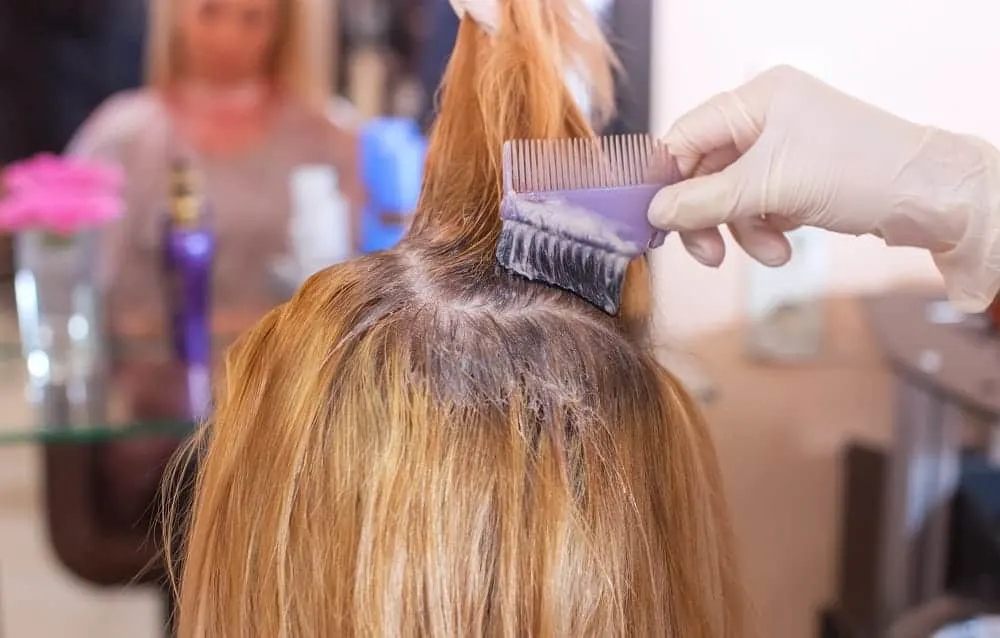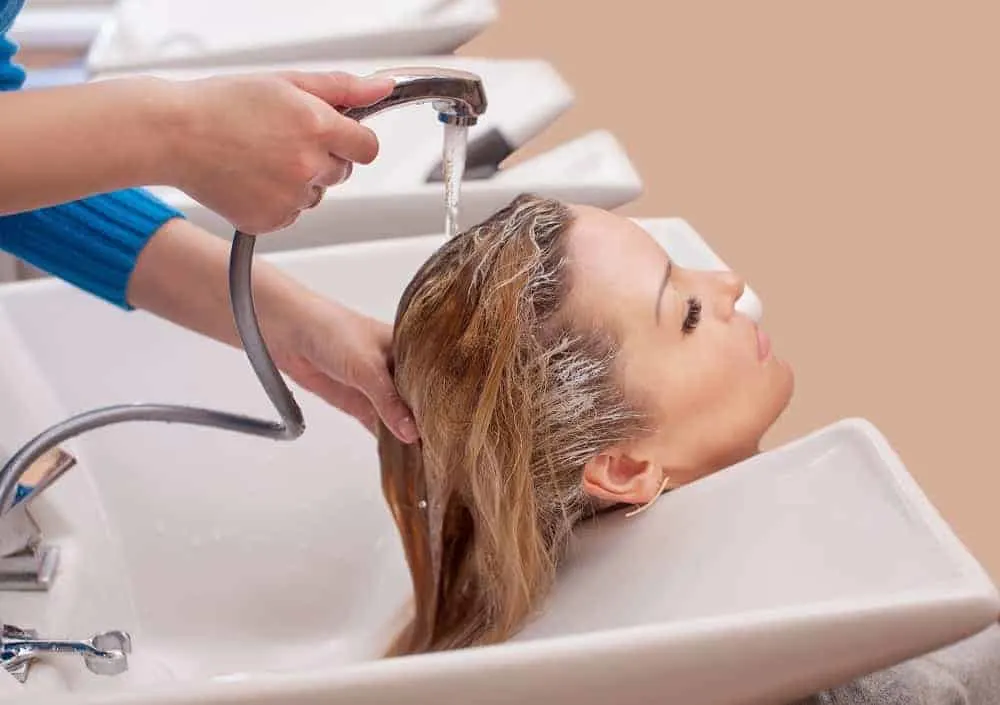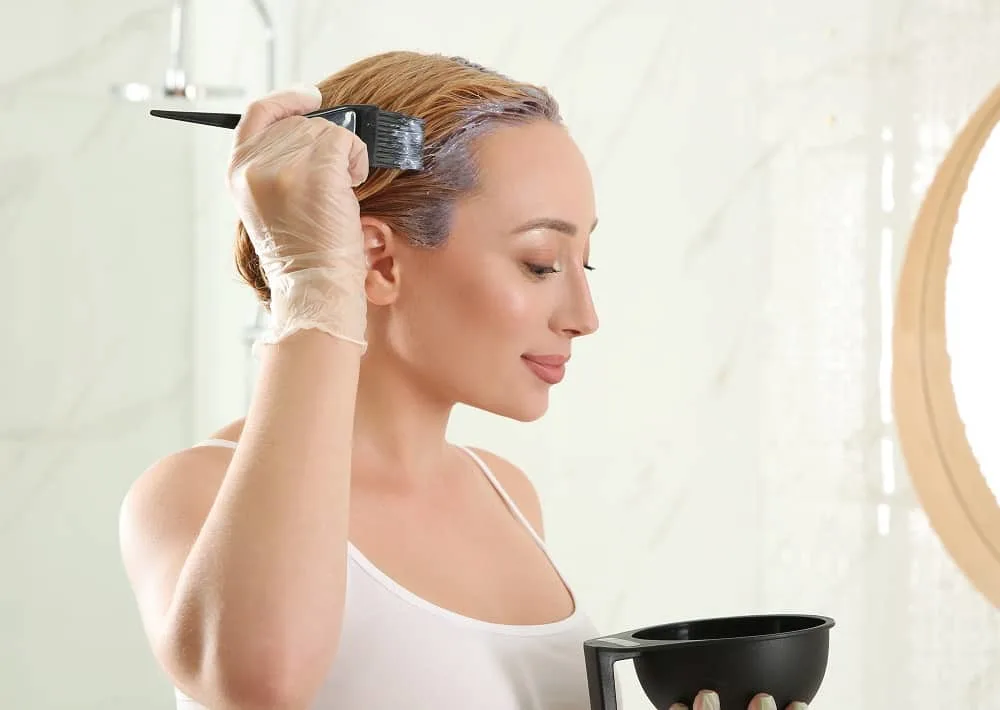You’ve gone ahead and bleached your hair for a new look, only to find out that your fresh style is a little less golden blonde and a little more off-color sunset than you intended. Your hair turned orange after bleaching. Yikes!
Don’t worry— it’s happened to most of us. While dying your hair orange can be a great look, most of us would prefer if our hair came out the color we intended. Luckily, it is possible to fix that orange color after a bleaching session gone wrong.
Let’s dive into some tips to help you learn how to fix orange hair after bleaching.
My Hair Turned Orange After Bleaching – Why?

The most common reason for accidentally orange hair is that your natural hair colors reacted to the dye in a way that creates brassy tones instead of the intended blonde outcome.
When you dye your hair, you’re not overwriting your hair’s natural color but rather applying a pigment-changing solution. The color your hair becomes after you dye it relies heavily on your hair’s natural pigment. Bleach will lighten that pigment but not erase it.
Many people with naturally red or brunette hair often face that brassy effect after bleaching their hair, turning it an off-shade of orange. In this case, the effect of the bleach is bringing out the natural red and orange undertones of the brunette hair.
Orange hair leads some people to believe that their hair doesn’t hold color very well or isn’t suited to be dyed. You may even think, “My hair won’t bleach past orange!” However, most hair has natural undertones of some kind, and there are ways to work with your original hair color to get the color you want.
How to Prevent Orange Hair After Bleaching
Consider the effects of the dye on your particular shade of hair. If you’re bleaching at home, read the instructions thoroughly and see if there is a hair color comparison chart to compare with your natural color.
If you’re bleaching your hair in a salon, ask the stylist for their expert opinion on your options for hair color. The experts know which shades are most compatible with your natural color.
Another way to avoid brassiness is to wash your hair thoroughly before attempting to bleach it. Sometimes, that orange after dyeing results from a build-up of minerals and oils in your hair. Hair products that contain sulfates can cause this build-up.
Before bleaching, check the packaging of your hair products for sulfates. If you’ve been using sulfate-heavy shampoos or conditioners, rinse your hair a few times before bleaching or use sulfate-free products for a few days first.
Of course, these tips can help prevent you from turning your hair brassy when you dye it. But what if you’re asking, “I dyed my hair and it turned orange: how do I fix it?”
How to Fix Orange Hair After Bleaching
There are multiple methods for fixing your hair after a bad bleach job, from tried-and-true products to new, hair-restoring approaches.
Using Toner
There’s a reason hair toner is one of the most popular products for correcting hair color. The right toner can often get rid of that orange color and improve your after-bleach hair. Here is a step-by-step process for de-brassing your hair using toner:
Choose Your Toner
The toner you need will depend on your natural hair color and desired outcome. If you end up with orange tones in your hair after bleaching, a blue hair toner will help neutralize the colors and bring your hair to a happy medium. If your hair has more yellow tones after bleaching, a purple toner will be more effective.
Gather Your Materials
In addition to the toner itself, you’ll also need a good amount of hydrogen peroxide (optional), an applicator brush, and a plastic bowl for mixing. Wear gloves to protect your skin from chemicals.
Mix It Up
Mix the toner with the peroxide in a 2:1 ratio. Technically, this process can work without peroxide if you don’t have any, but it can help the toner work more effectively. Make sure to get the solution thoroughly mixed before applying.
Apply Toner Solution
Next, cover all of your hair (and not just the orange areas) with the toner and peroxide solution. Have a friend help so you won’t miss any spots, and make sure you evenly coat the hair all over your head. An applicator brush helps keep the toner from clumping and spreading it evenly.
Let the Toner Do Its Job
Now we wait! Once you’ve applied the solution to all of your hair, you’ll need to sit and let it work for up to 45 minutes. That’s 45 minutes maximum, so be sure not to leave it on your hair for any longer than that.
Always read the manufacturer’s instructions, however, because some products might require different application times.
Rinse
Use any non-sulfate (and preferably color-safe) shampoo to rinse your hair. Keep your hair under the water for as long as it takes to remove all of the toner. Of course, if the toner instructions give different advice, follow that instead.
Using Coconut Oil
Most people go for toner when color-correcting, but there are other options. You can use coconut oil to fix hair that turned orange after bleaching. The benefits are that applying this coconut oil mixture to your hair can help shield the color using natural ingredients while removing that post-bleach orange.
If your hair has a distinct orange color, try adding one or two teaspoons of salt into your coconut oil. Mix it in thoroughly so that the salt can work its magic on the brassiness while the oil conditions your hair.
Massage the coconut oil mixture through all of your hair and leave it in for about half an hour. Use a sulfate-free shampoo to rinse all of the coconut oil and salt solution out of your hair. Be patient because it could take a few rinses to remove all the oily residue.
Using Box Dye
One simple but often tricky solution to the question, “How to fix orange hair after bleaching?” is to dye your hair closer to the color you intended. Dyeing can be a challenging approach because you’re attempting to dye the brassy orange into something new rather than working with your natural hair color.
You can use box dye in two different ways to fix hair turned orange after bleaching.
Use a Bleach Touch-Up Kit
“I dyed my hair and it turned orange; how do I fix it?”
If you didn’t leave the bleach on your hair long enough, and that’s why it went wrong, try bleaching again. Applying touch-up bleach dye—and making sure to leave it in for the appropriate amount of time—may do the trick. Remember to rinse with a mild sulfate-free shampoo afterward.
Use Blonde Dye
Though it’s a risky approach, some people try using a yellowish-blonde dye to counteract the brassiness from the first round of bleaching. If you choose this route, it’s essential to use soft-toned shades, such as dark ash or beige blonde, to balance the orange color.



